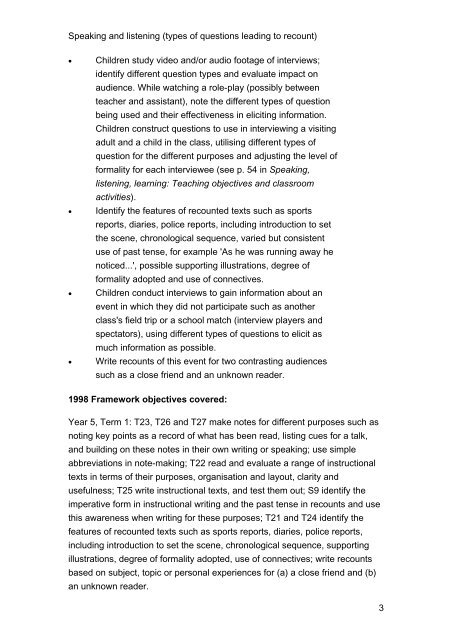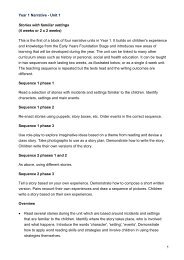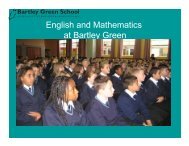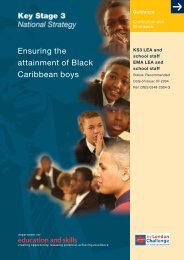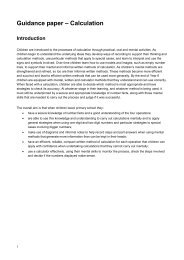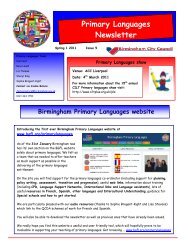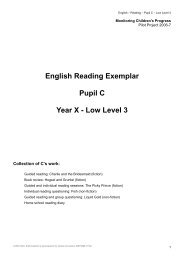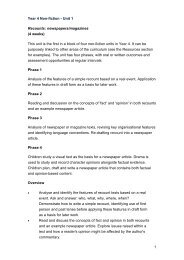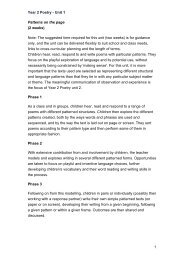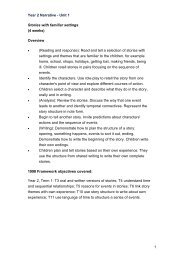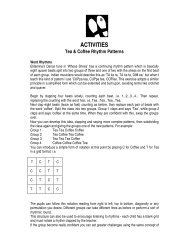Year 5 Non-fiction - Unit 1 - BGfL
Year 5 Non-fiction - Unit 1 - BGfL
Year 5 Non-fiction - Unit 1 - BGfL
- No tags were found...
Create successful ePaper yourself
Turn your PDF publications into a flip-book with our unique Google optimized e-Paper software.
Speaking and listening (types of questions leading to recount)• Children study video and/or audio footage of interviews;identify different question types and evaluate impact onaudience. While watching a role-play (possibly betweenteacher and assistant), note the different types of questionbeing used and their effectiveness in eliciting information.Children construct questions to use in interviewing a visitingadult and a child in the class, utilising different types ofquestion for the different purposes and adjusting the level offormality for each interviewee (see p. 54 in Speaking,listening, learning: Teaching objectives and classroomactivities).• Identify the features of recounted texts such as sportsreports, diaries, police reports, including introduction to setthe scene, chronological sequence, varied but consistentuse of past tense, for example 'As he was running away henoticed...', possible supporting illustrations, degree offormality adopted and use of connectives.• Children conduct interviews to gain information about anevent in which they did not participate such as anotherclass's field trip or a school match (interview players andspectators), using different types of questions to elicit asmuch information as possible.• Write recounts of this event for two contrasting audiencessuch as a close friend and an unknown reader.1998 Framework objectives covered:<strong>Year</strong> 5, Term 1: T23, T26 and T27 make notes for different purposes such asnoting key points as a record of what has been read, listing cues for a talk,and building on these notes in their own writing or speaking; use simpleabbreviations in note-making; T22 read and evaluate a range of instructionaltexts in terms of their purposes, organisation and layout, clarity andusefulness; T25 write instructional texts, and test them out; S9 identify theimperative form in instructional writing and the past tense in recounts and usethis awareness when writing for these purposes; T21 and T24 identify thefeatures of recounted texts such as sports reports, diaries, police reports,including introduction to set the scene, chronological sequence, supportingillustrations, degree of formality adopted, use of connectives; write recountsbased on subject, topic or personal experiences for (a) a close friend and (b)an unknown reader.3


